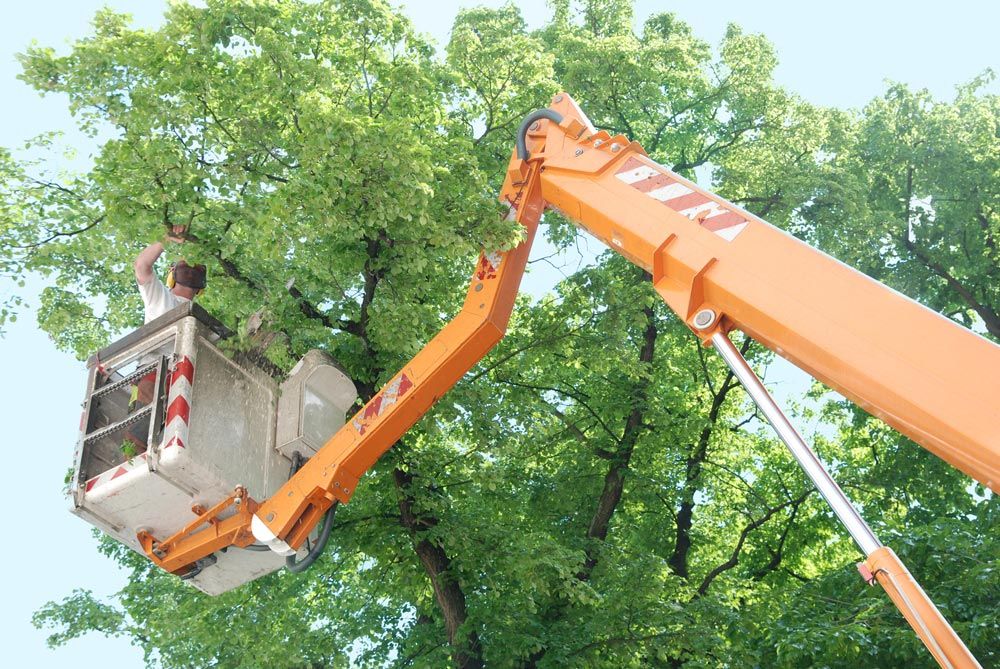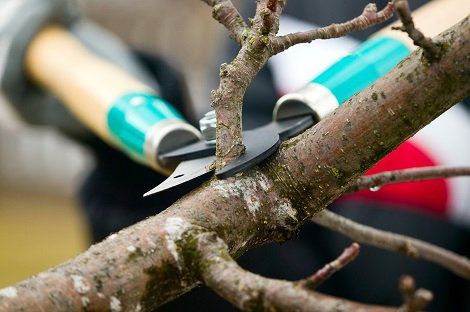CALL US TODAY!
Causes of Tree Leaf Discoloration
Tree leaf discoloration is a common issue for many homeowners and can result from numerous factors. The best remedy for such a problem is to identify the cause and take the necessary steps to keep your trees healthy and thriving. Read on to discover some of the various causes of tree leaf discoloration and how to address them.
Extreme Temperatures
Due to excessive sun exposure, leaves may start to brown and curl when exposed to high temperatures, which results in leaf scorch. This condition can worsen due to additional elements such as a lack of water, excess fertilizer, and root damage.
Remember to protect young trees from solar overexposure by planting them in the spring or fall. You can also provide shade or a reflector and use cheesecloth to offer an additional layer of defense. Young trees are particularly vulnerable to sun overexposure.
Leaves will also start to darken and, in some circumstances, fall off if they experience freezing temperatures or frost. Frost damage causes this leaf discoloration, and magnolia trees are particularly vulnerable. During the colder months, you can cover the tree in burlap or an old blanket to prevent harm from frost.
Diseases
Infections can discolor leaves in a variety of ways. Some of the common diseases that affect leaves directly include leaf rust, fire blight, powdery mildew, and leaf spot. Leaf rust results from a fungus and manifests as yellow or orange patches on the upper leaf surface. These blemishes can extend to the undersides of leaves, where they can dry out and fall off the tree.
A bacterial illness known as fire blight causes leaves to wilt and turn brown or black, which can lead to the death of the entire branch. A fungal illness called powdery mildew causes the leaves to develop a thin covering or erratically shaped areas of white, powdery substance. As a result, leaves may be deformed, yellow, or crimson before they eventually fall from the tree.
A fungus called leaf spot forms red spots on the leaves, which cause decay and create holes in the foliage. This fungus spreads swiftly during the rainy and chilly spring months. Leaf spot is particularly prevalent in trees like ornamental cherry trees. These spots can make leaves fall off the tree if they are not treated.
If you notice any of these signs, call a tree service for further diagnosis and understand how to treat your tree.
Water Imbalance
Overwatering and underwatering are the two causes of the darkening of leaves because of water problems. Overwatering saturates the soil with water and deprives the plant's roots of enough air to breathe. The leaves begin to curl inward and turn yellow because of this.
Alternatively, when a plant does not receive enough water, the soil dries out, and the roots cannot take up enough moisture to support the leaves. The leaves hang or crisp and turn brown or yellow. Give the soil adequate time to dry between waterings, and water your plant only when the soil feels dry to avoid water imbalance.
Fertilizer and Soil Issues
The tree's roots and foliage can burn from applying too much fertilizer, which will also discolor the leaves. However, uneven yellowing with probable leaf abnormalities might result from a mineral deficit, typically calcium or boron. The tree can benefit from regular feeding or repotting to get its nutrients. Remember to balance the fertilizer amount to achieve the best results.
Moreover, soil compaction can stop root growth, which causes a shortage of nutrients and leaf discoloration. The tree cannot establish roots in the soil if it is overly compacted. Before planting, loosen the soil with organic material like mulch.
Contact us at AAA Tree Service for tree services if you reside within Sacramento, CA, and surrounding regions.
Browse Our Website
Contact Information
Phone: (916) 383-7413 | 916-925-0328
Address: 8511 Elwyn Avenue Elverta, CA 95626
State Contractors License # 861149
County Contractors License # 321511
City Contractors License # 141468
Special Contractors License # 609581


